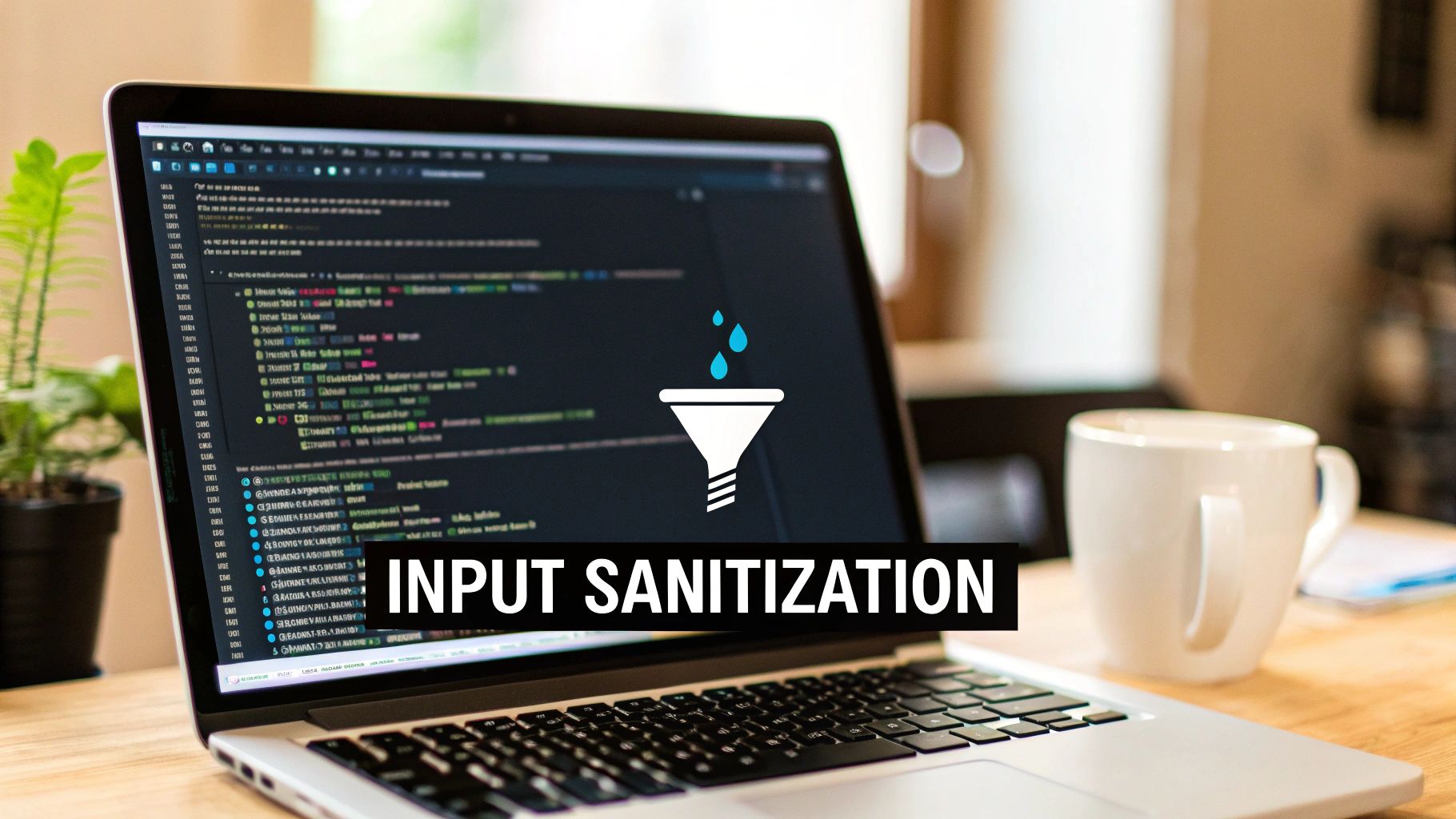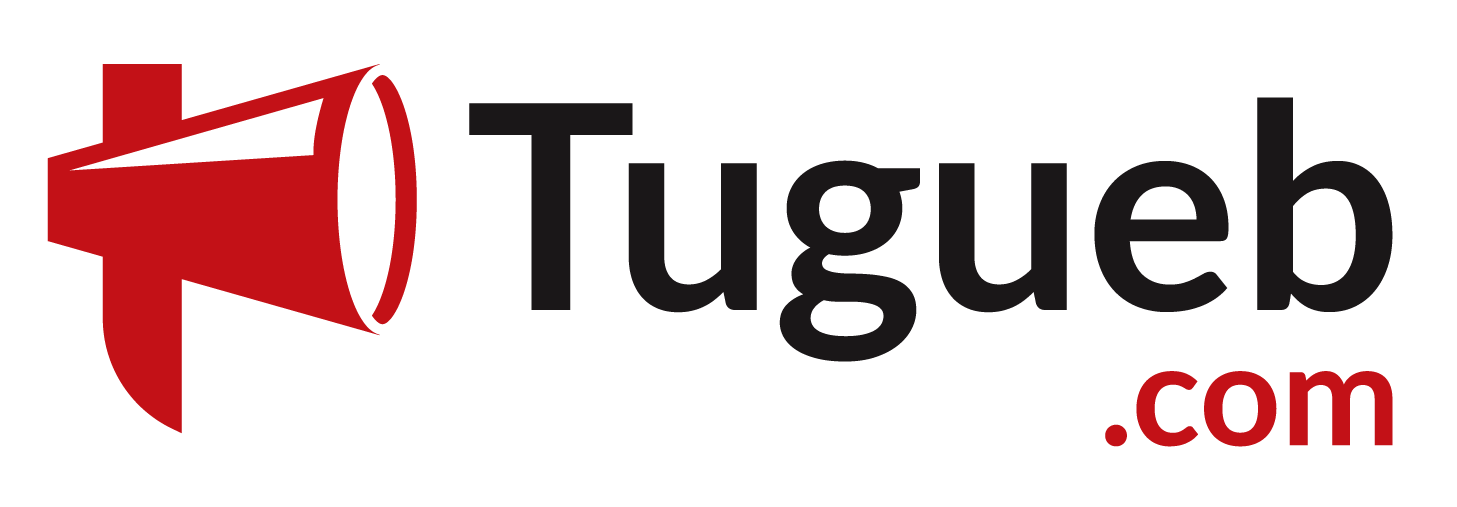Launching a web application is just the beginning. The real challenge is building a fortress around it that can withstand sophisticated cyber threats. A single vulnerability can compromise user data, erode customer trust, and bring a promising venture to its knees. This is why mastering web application security best practices is not just an IT task-it is a core business imperative for survival and growth.
This guide cuts through the noise to deliver a definitive roundup of the 10 most critical security principles for modern applications. Each practice is a pillar supporting your app's integrity, ensuring you can innovate and scale with confidence. We move beyond generic advice and focus on actionable strategies that your development team can implement immediately.
From sanitizing every user input to implementing robust access controls, we provide the specific steps and real-world context needed to build a resilient product. You will learn how to secure data in transit, prevent common injection attacks, and manage user sessions like a vault. Consider this your essential checklist for transforming your application from merely functional to truly secure.
1. Input Validation and Sanitization
One of the most foundational web application security best practices is to treat all user-supplied data as untrusted. Input validation and sanitization is the process of rigorously checking, filtering, and cleaning any data your application receives before it's processed or stored. This crucial first line of defense prevents attackers from injecting malicious code that could compromise your system.

The core principle is simple: validate for what is expected, not what is unwanted. By enforcing strict rules on data type, length, format, and range, you effectively block common attacks like SQL Injection, Cross-Site Scripting (XSS), and command injection. For instance, PayPal’s strict validation on payment forms ensures only valid financial data is processed, preventing fraudulent transactions. Similarly, GitHub validates repository inputs to block malicious code execution.
Key Implementation Strategies
-
Server-Side First: While client-side validation provides a better user experience by giving instant feedback, it can be easily bypassed. Always perform authoritative validation on the server.
-
Use Parameterized Queries: To prevent SQL injection, use prepared statements (also known as parameterized queries) instead of dynamic SQL. This ensures user input is treated as data, not executable code.
-
Leverage Libraries: Avoid writing validation logic from scratch. Use well-vetted, established libraries for your framework (e.g.,
express-validatorfor Node.js,Hibernate Validatorfor Java) to handle complex cases securely. -
Encode Output: Sanitize data on input and encode it on output. Based on where the data will be rendered (HTML, JavaScript, CSS), use the appropriate encoding to neutralize any potentially harmful scripts.
2. Secure Authentication and Authorization
Properly managing user access is a cornerstone of web application security best practices. This involves two distinct but related processes: authentication (verifying a user is who they claim to be) and authorization (granting that verified user appropriate access to resources). A failure in either can lead to unauthorized data exposure, privilege escalation, and complete system compromise.

The core principle is to enforce the Principle of Least Privilege, ensuring users only have access to the information and functionality essential for their role. For example, Microsoft Azure's Active Directory provides granular role-based access controls for enterprise applications, preventing a standard user from accessing administrative functions. Similarly, Google’s OAuth 2.0 framework allows users to grant limited, specific permissions to third-party apps without sharing their passwords.
Key Implementation Strategies
-
Implement Strong Password Policies: Enforce password complexity, length requirements, and use a strong, salted hashing algorithm like Argon2 or bcrypt to store credentials securely.
-
Enforce Multi-Factor Authentication (MFA): Add a critical layer of security by requiring a second form of verification, such as a code from an authenticator app or a biometric scan.
-
Secure Session Management: Generate session tokens with high entropy and transmit them securely. Use
HTTPOnlyandSecureflags on cookies to prevent access via client-side scripts and ensure they are only sent over HTTPS. -
Use Standard Protocols: Leverage established frameworks like OAuth 2.0 or SAML for authentication and authorization, especially when integrating with third-party services. This avoids reinventing the wheel and potential security flaws.
3. HTTPS Encryption and TLS Implementation
Encrypting all data in transit is a non-negotiable component of modern web application security best practices. By implementing HTTPS (Hypertext Transfer Protocol Secure) with strong Transport Layer Security (TLS) protocols, you create a secure, encrypted channel between a user's browser and your server. This critical practice ensures data confidentiality, integrity, and authenticity, protecting sensitive information from eavesdropping and man-in-the-middle attacks.

The core principle is to prevent unauthorized access to data as it moves across the internet. Without encryption, login credentials, personal data, and session tokens are transmitted in plaintext, making them easy for attackers to intercept. The widespread adoption of HTTPS has been driven by services like Let's Encrypt, which provides free SSL/TLS certificates, and Cloudflare's Universal SSL. E-commerce giants like Amazon use Extended Validation (EV) certificates to provide a visible trust indicator, assuring customers their financial data is secure.
Key Implementation Strategies
-
Enforce Modern TLS Versions: Configure your server to use a minimum of TLS 1.2 and preferably TLS 1.3. Disable outdated and vulnerable protocols like SSLv2, SSLv3, and TLS 1.0/1.1.
-
Implement HSTS: Use the HTTP Strict-Transport-Security (HSTS) header to force browsers to communicate with your server only over HTTPS, preventing protocol downgrade attacks.
-
Use Strong Cipher Suites: Prioritize cipher suites that offer forward secrecy and authenticated encryption (AEAD), such as those based on ECDHE and AES-GCM. Remove weak and insecure ciphers from your server configuration.
-
Regularly Renew and Test: Automate certificate renewal to avoid expiration-related outages. Use tools like the Qualys SSL Labs Server Test to regularly audit your SSL/TLS configuration and identify potential weaknesses.
4. SQL Injection Prevention
SQL Injection (SQLi) remains one of the most dangerous and prevalent web application security vulnerabilities. It occurs when an attacker inserts or "injects" malicious SQL code into an application's input fields, which is then executed by the database. A successful attack can result in unauthorized access to sensitive data, data modification or deletion, and even full server compromise. Preventing SQLi is a non-negotiable aspect of modern web application security best practices.

The core defense mechanism is to ensure that user input is never directly concatenated into SQL queries. By treating user input strictly as data rather than part of the executable command, you neutralize the threat. For instance, banking applications use parameterized queries to securely process transactions, and e-commerce platforms use prepared statements for product searches, ensuring user search terms can't manipulate the underlying database query and expose customer data.
Key Implementation Strategies
-
Use Parameterized Queries: Also known as prepared statements, this is the most effective defense. The SQL query is defined first with placeholders for user input, and the input is later supplied as parameters, ensuring it cannot alter the query's logic.
-
Implement the Principle of Least Privilege: Create database accounts for your application with the minimum permissions necessary to function. The account should not have permissions to drop tables or access administrative information if it only needs to read and write to specific tables.
-
Leverage ORM Frameworks: Modern Object-Relational Mapping (ORM) tools like Hibernate, Django ORM, or SQLAlchemy often handle parameterization automatically, providing a built-in layer of protection against SQLi.
-
Perform Regular Audits: Consistently use security scanning tools and conduct manual code reviews to identify and remediate potential SQLi vulnerabilities before they can be exploited.
5. Cross-Site Scripting (XSS) Protection
Cross-Site Scripting (XSS) remains one of the most prevalent vulnerabilities, occurring when a web application allows a user to inject malicious scripts into content viewed by other users. Effective XSS protection is a multi-layered web application security best practice designed to prevent these scripts from executing in a victim's browser, thereby safeguarding user sessions, data, and credentials.
The core goal is to ensure that any data originating from a user cannot be misinterpreted as active code by a browser. The most effective defense combines a strict Content Security Policy (CSP) with context-aware output encoding. For example, Twitter rigorously encodes tweet content to neutralize scripts before rendering, while Facebook’s robust CSP implementation blocks unauthorized script sources, effectively preventing attackers from executing malicious code even if an injection vulnerability is found.
Key Implementation Strategies
-
Implement a Strict Content Security Policy (CSP): A CSP is a powerful browser-level security mechanism that tells the browser which sources of content (scripts, styles, images) are trusted. Using nonces or hashes provides a strong defense against script injection.
-
Use Context-Aware Output Encoding: Before rendering user-supplied data in HTML, you must encode it to prevent it from being interpreted as code. Use libraries that automatically handle contextual encoding (e.g., for HTML attributes, JavaScript data, or CSS values) to avoid mistakes.
-
Leverage Secure Frameworks: Modern web frameworks and templating engines (like React, Angular, and Vue.js) have built-in protections against XSS by automatically encoding data. Always use these features and avoid manually manipulating the DOM.
-
Validate and Sanitize Input: While output encoding is the primary defense, validating and sanitizing input on the server side provides an additional layer of security, blocking malicious payloads before they are even stored.
6. Security Headers Implementation
Another critical layer in a defense-in-depth strategy is the correct implementation of HTTP security headers. These headers are directives sent from your web server to the client's browser, instructing it on how to behave securely when handling your site's content. Properly configured headers are a simple yet powerful tool for mitigating a wide range of common attacks, including Cross-Site Scripting (XSS), clickjacking, and protocol downgrade attacks.
The core principle is to explicitly tell the browser what is and isn't allowed. For example, GitHub's comprehensive security header policy prevents its content from being embedded in malicious iframes, while banking sites use HTTP Strict Transport Security (HSTS) to ensure browsers only ever connect to them over a secure HTTPS connection. This makes security headers a fundamental component of modern web application security best practices.
Key Implementation Strategies
-
Implement a Content Security Policy (CSP): A CSP is a powerful header that controls which resources (scripts, stylesheets, images) the browser is allowed to load. Start with a
Content-Security-Policy-Report-Onlyheader to test your policy without breaking functionality. -
Enforce Secure Connections with HSTS: The
Strict-Transport-Securityheader forces browsers to use HTTPS, preventing man-in-the-middle attacks. Implement it with a longmax-agevalue and consider submitting your site to the HSTS preload list. -
Prevent Clickjacking: Use the
X-Frame-Optionsheader or theframe-ancestorsdirective in your CSP to control whether your site can be rendered within a<frame>,<iframe>,<embed>, or<object>. -
Leverage Security Scanners: Use tools like Mozilla's Observatory or Scott Helme's SecurityHeaders.com to analyze your current header configuration and receive actionable recommendations for improvement.
7. Secure Session Management
Managing the user lifecycle securely is a critical web application security best practice that goes beyond a simple login. Secure session management involves protecting the entire user session, from initial authentication to final logout. This process ensures that the unique session identifiers (IDs) assigned to users are unpredictable, stored safely, and properly invalidated to prevent attackers from hijacking legitimate user sessions and gaining unauthorized access.
The core principle is to treat session IDs as temporary, high-value credentials. Strong session management protects against attacks like session hijacking, fixation, and cross-site request forgery (CSRF). For example, online banking systems enforce strict session timeouts and regenerate session IDs after login to prevent unauthorized transactions. Similarly, Netflix manages secure sessions across multiple devices, ensuring a user’s viewing history and account details remain private even when logged in from various locations.
Key Implementation Strategies
-
Generate Strong Session IDs: Use a cryptographically secure pseudo-random number generator (CSPRNG) to create long, unpredictable session identifiers. Avoid using predictable data like usernames or timestamps.
-
Enforce Session Timeouts: Implement both inactivity timeouts (e.g., 15-30 minutes) and absolute timeouts (e.g., 8-24 hours). This limits the window of opportunity for an attacker to exploit a compromised session.
-
Regenerate IDs on Privilege Change: Immediately create a new session ID upon successful authentication or any change in privilege level (like accessing an admin panel). This mitigates session fixation attacks.
-
Secure Cookies: When using cookies to store session IDs, set the
Secureflag to ensure they are only sent over HTTPS and theHttpOnlyflag to prevent client-side scripts from accessing them.
8. Regular Security Updates and Patch Management
The digital landscape is constantly evolving, with new vulnerabilities discovered daily. A crucial web application security best practice is to maintain a systematic approach to identifying, testing, and applying security updates. This process, known as patch management, ensures all components of your application stack, from frameworks and libraries to operating systems and third-party dependencies, are protected against known exploits.
The core principle is that an unpatched system is an insecure system. Neglecting updates leaves your application vulnerable to automated attacks that scan for and exploit well-documented security holes. For example, GitHub's Dependabot automatically creates pull requests to update outdated dependencies, helping developers patch vulnerabilities before they can be exploited. Similarly, Microsoft’s "Patch Tuesday" provides a predictable schedule for deploying critical security fixes, minimizing exposure for millions of systems.
Key Implementation Strategies
-
Automate Vulnerability Scanning: Use tools like
npm auditfor Node.js projects or OWASP Dependency-Check to automatically scan your codebase for dependencies with known vulnerabilities. -
Maintain an Asset Inventory: Keep a detailed, up-to-date inventory of all software, frameworks, libraries, and their versions. This makes it possible to quickly identify which systems are affected when a new vulnerability is announced.
-
Establish a Staging Environment: Always test patches in a staging environment that mirrors your production setup. This helps prevent updates from breaking critical application functionality.
-
Subscribe to Security Advisories: Follow security announcements from vendors and open-source projects you rely on (e.g., NIST National Vulnerability Database, SANS Institute) to stay informed about emerging threats.
9. Error Handling and Information Disclosure Prevention
A crucial, yet often overlooked, web application security best practice involves managing how your application handles errors. Secure error handling is a delicate balance: providing enough information to help legitimate users resolve issues without leaking sensitive system details that could aid an attacker. Improperly configured error messages can expose stack traces, database queries, or internal file paths, giving adversaries a detailed roadmap of your system’s architecture.
The core principle is to be helpful to users but vague to attackers. When an error occurs, the goal is to log extensive, detailed information for your development team while presenting the end-user with a generic, friendly message. For example, banking applications display sanitized error responses like "Invalid credentials" instead of "User 'admin' not found in database," which would confirm a valid username. Similarly, Amazon’s generic error pages prevent the disclosure of its complex backend architecture.
Key Implementation Strategies
-
Never Show Raw Errors: In a production environment, never display stack traces, database error messages, or internal server errors directly to the user. Configure your application to show custom, generic error pages.
-
Centralize and Sanitize Logging: Implement a robust, centralized logging system to capture detailed error information on the server-side. Ensure these logs are secured, sanitized to prevent log injection attacks, and regularly reviewed for suspicious activity.
-
Disable Debug Mode: Features like WordPress's
WP_DEBUGconstant inwp-config.phpare invaluable for development but must be disabled in production to prevent sensitive information disclosure. -
Test Error Scenarios: During security assessments, intentionally trigger various error conditions (e.g., invalid inputs, failed database connections) to verify that the application responds securely and does not leak internal data.
10. Access Control and Principle of Least Privilege
A cornerstone of robust web application security best practices is implementing strong access control based on the Principle of Least Privilege (PoLP). This security concept dictates that a user, application, or system should only have the minimum levels of access, or permissions, needed to perform its specific, authorized functions. By tightly restricting access, you dramatically reduce the potential attack surface and limit the damage an attacker can cause if a single account is compromised.
The core principle is simple: default to deny all access, then grant specific permissions as required. This proactive approach prevents privilege creep and unauthorized data exposure. For example, AWS Identity and Access Management (IAM) policies are built on this principle, allowing administrators to grant granular permissions to specific cloud resources. Similarly, Salesforce uses a complex system of profiles and permission sets to ensure sales reps can’t access sensitive administrative settings.
Key Implementation Strategies
-
Implement Role-Based Access Control (RBAC): Define roles (e.g., 'admin', 'editor', 'viewer') with specific permission sets. Assign users to these roles instead of granting permissions directly, simplifying management and auditing.
-
Start with Minimal Permissions: When creating a new user or service account, begin with zero access. Incrementally add only the necessary permissions, justifying each addition.
-
Conduct Regular Access Reviews: Periodically audit user permissions to identify and revoke excessive or unnecessary access rights. This is especially critical after an employee changes roles or leaves the organization.
-
Monitor for Privilege Escalation: Implement monitoring and alerting to detect attempts by users or attackers to gain higher-level permissions than they are authorized for.
10 Key Web Security Best Practices Comparison
|
Security Practice |
Implementation Complexity 🔄 |
Resource Requirements ⚡ |
Expected Outcomes 📊 |
Ideal Use Cases 💡 |
Key Advantages ⭐ |
|---|---|---|---|---|---|
|
Input Validation and Sanitization |
Medium to High – complex for all input vectors |
Moderate – validation libraries and upkeep |
Prevents injection attacks, improves data quality and reliability |
Web apps processing user inputs, payment forms |
Strong defense against injection, improves UX |
|
Secure Authentication and Authorization |
High – MFA, session management, RBAC |
High – infrastructure for MFA and sessions |
Reduces unauthorized access, supports compliance |
Systems requiring user identity verification, enterprise apps |
Granular permission control, audit trails |
|
HTTPS Encryption and TLS Implementation |
Medium – certificate management and config |
Moderate – certs and infrastructure upkeep |
Protects data in transit, ensures confidentiality |
All web services, APIs, e-commerce |
Data confidentiality, user trust, SEO benefits |
|
SQL Injection Prevention |
Medium – careful coding and DB policies |
Moderate – dev time and monitoring |
Prevents database breaches, maintains data integrity |
Databases exposed to user queries, transactional systems |
Robust against SQL injection, compliance support |
|
Cross-Site Scripting (XSS) Protection |
Medium – CSP, encoding, input validation |
Moderate – ongoing testing and policy updates |
Prevents malicious script execution, protects user data |
Web applications with dynamic content |
Protects users from script-based attacks, session theft |
|
Security Headers Implementation |
Low to Medium – configuration focused |
Low – minimal overhead |
Adds layered protection against multiple attacks |
Web servers, applications needing defense-in-depth |
Easy with high security impact, minimal overhead |
|
Secure Session Management |
High – secure ID, timeout policies, regeneration |
Moderate to High – secure storage and dev effort |
Prevents session hijacking, supports compliance |
Apps with authenticated sessions, multi-device environments |
Protects sessions, reduces unauthorized access |
|
Regular Security Updates and Patch Management |
Medium – ongoing process and infrastructure |
Moderate to High – testing and deployment |
Protects against known vulnerabilities, maintains compliance |
All software stacks, dependencies |
Reduces exploit risks, improves stability |
|
Error Handling and Info Disclosure Prevention |
Medium – balanced error design and logging |
Moderate – logging infrastructure |
Prevents sensitive info leakage, improves UX |
Public-facing apps, critical systems |
Prevents info leaks, aids secure debugging |
|
Access Control and Principle of Least Privilege |
High – design, enforcement, and review processes |
Moderate to High – tooling and audits |
Minimizes attack surface, enforces security principle |
Enterprise systems, cloud resources |
Reduces risks, compliance, auditability |
Build Fast, Build Secure: Your Next Steps
Navigating the landscape of web application security can feel like a monumental task, especially when your primary focus is rapid innovation and market entry. Throughout this guide, we've unpacked ten foundational pillars that transform security from an afterthought into an integral part of your development DNA. From rigorously validating every user input and implementing robust authentication to encrypting data in transit with HTTPS and thwarting injection attacks, each practice serves as a critical layer in a multi-faceted defense strategy.
The core takeaway is this: proactive security is not a barrier to speed, but an enabler of sustainable growth. Ignoring these principles doesn't save time; it merely defers the cost, often with catastrophic interest. A security breach can irrevocably damage user trust, brand reputation, and financial stability, making the upfront investment in best practices one of the highest-return decisions a founder or product manager can make.
Turning Knowledge into Action
Mastering these concepts requires a shift in mindset. Security isn't a single checkbox to be ticked off before launch. It's an ongoing, iterative process. To help you move forward, here are your immediate next steps:
-
Conduct a Self-Audit: Use the ten practices detailed in this article as a checklist. Review your current application or your development plan and honestly assess where you stand. Identify the most critical gaps, particularly concerning data handling (SQLi, XSS) and user access (authentication, authorization).
-
Prioritize the Principle of Least Privilege: This is one of the most impactful yet often overlooked concepts. Immediately review user roles and permissions within your application and infrastructure. Ensure that every user, service, and API key has only the absolute minimum access required to perform its function.
-
Automate Where Possible: Integrate security scanning tools into your CI/CD pipeline. Automated tools can catch common vulnerabilities, outdated dependencies, and configuration errors long before they reach production, making your patch management process far more efficient.
The Foundation for a Trusted Product
Ultimately, implementing these web application security best practices is about more than just preventing attacks. It's about building a product that your users can trust implicitly. In a competitive market, a reputation for reliability and security is a powerful differentiator. By embedding these principles into your culture from day one, you’re not just writing secure code; you're building a resilient business poised for long-term success. The journey from a great idea to a secure, market-ready product requires both speed and diligence. Make the commitment today to build not just fast, but to build right.
Are you ready to launch a product that's as secure as it is innovative? At BuildMVPFast, we integrate these security best practices directly into our rapid development process, ensuring your MVP is built on a foundation of trust and safety from day one. Let us handle the technical complexities so you can focus on your vision. BuildMVPFast
Article created using Outrank

























Leave a Reply